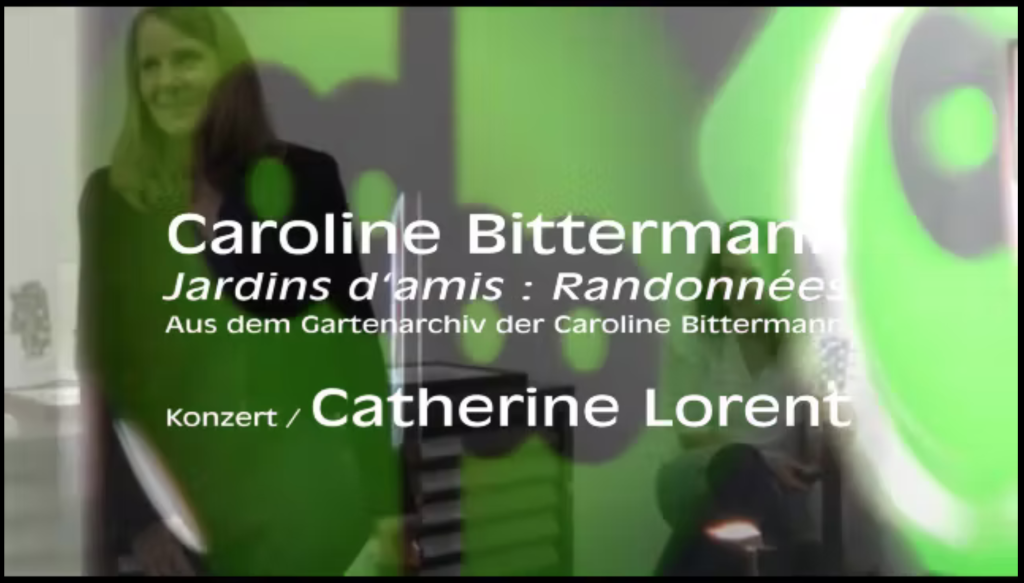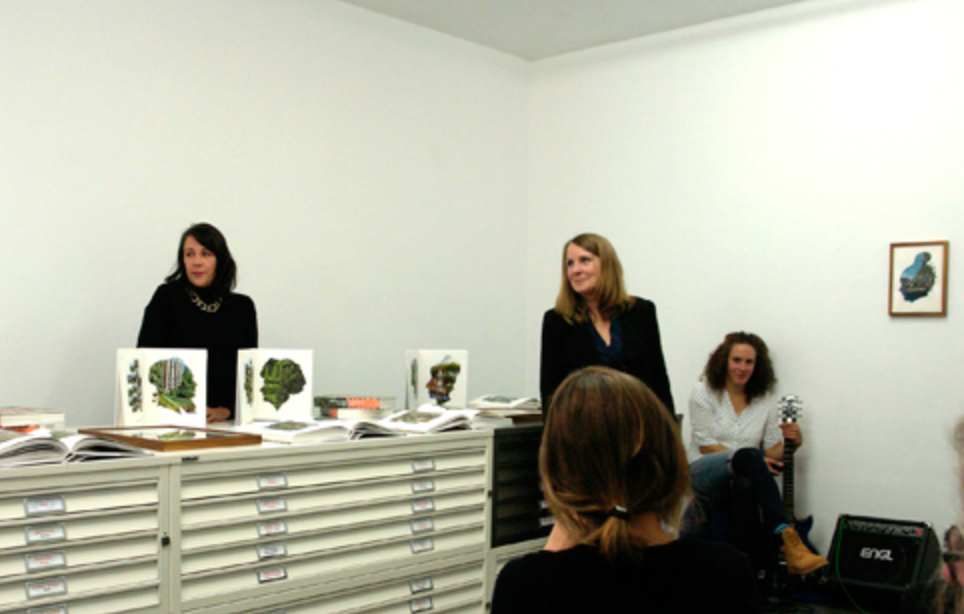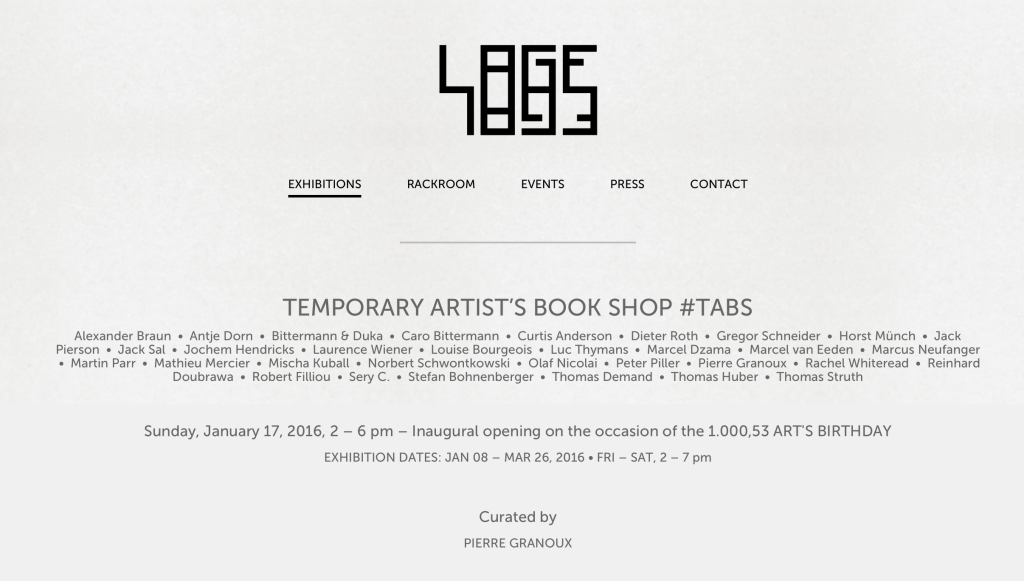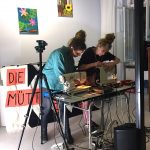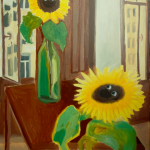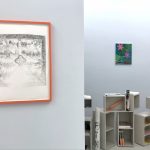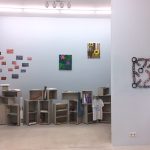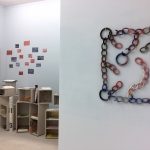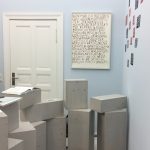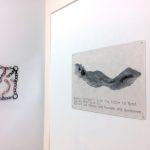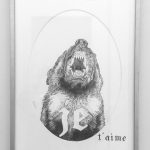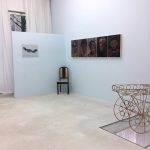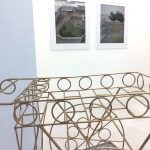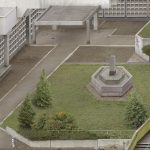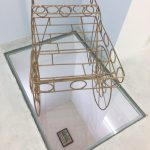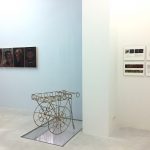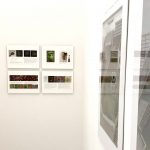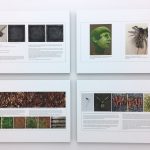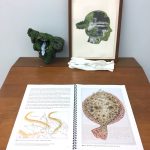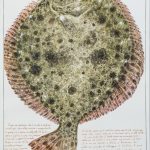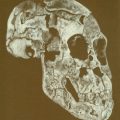



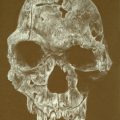
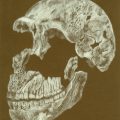
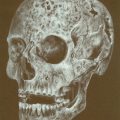
THROUGH THE TEAR
THROUGH THE TEAR
Trailer for the documentary by Bernard Giglio
Duration: 65′
Original in English
Written by Caroline Bittermann & Bernard Giglio
We are one species with overwhelming genetical similarities and insignificant differences. The film questions why our modern societies concentrate on our negligible morphological differences, the result of our permanent environmental adaptation, instead of embracing what makes us human.
Pippa Skotnes, University of Capetown
James Suzman, Cambridge
José Manuel de Prada Semper, Barcelona/University of Capetown
Rachel Watkins, American University Washington DC
SAN people, Grashoek Community, Namibia: healers, singers, hunters
⁄⁄uce N≠amce (Ancestry testing)
Kxau N!aici (Healing)
Kxan⁄⁄ae !amace (Translator)
Kxan⁄⁄ae !amace (Hunting)
Kxau N!aici (Hunting)
Cwisa N≠amce (Plant-Knowledge)
⁄asa N≠amce ( Plant-Knowledge)
⁄⁄uce Kxao
⁄⁄uce N⁄onuo
Kharu ⁄kun
⁄isa Tsaan
SAN people Tsumkwe Community, Namibia: healers, dancers, singers, hunters
//Uce Ghau
Baqu Kha//‘an
//Ao /Ui
!Uu !Ae
Xao//‘an /Ui
N!ae Tsamkxao
N/akxa G/aqo
Tci!xo /Ukxa
//Ao Tele/Ui
N≠aisa Ghau
N!hunkxa G/aqo
Xoan Obe
/Xon/‘oa !Amace
Kxao Kha//‘an
Komtsa N!aici
Komtsa Kxao
G/aqo Kaqece
Komtsa Dqam
RUINANZEN

RUINANZEN
Photoseries, since 1989 ongoing, seize variable, collage and text in the artist book “BODENSCHÄTZE”, by Ingrid Gossner, published by Martin Bohn, Cologne, 2024
In the publication “BODENSCHÄTZE” Ingrid Gossner describes the results of her research into the diversity of life forms and our often irresponsible approach to them, triggered by her allotment garden project.

Cover “BODENSCHÄTZE”, by Ingrid Gossner, 2024


Left: “Jardins d’amis – Topiary Slam – Hannah Höch”,
from a series of 81 watercolours, 2026-19
Exhibition views with text of “Jardins d’amis – Irrhain”, curated by Caroline Bittermann, Berlin-Schöneberg, 2021 (works by Trixi Groiss, Caroline Bittermann, Andrea Pichl, Ingrid Gossner, Beate Gütschow, Claudia Zweifel, Lucia Schreyer, Seraphina Lenz, Katrin Plavčak)
GEHEIME GÄRTEN ROLANDSWERTH

Westart, 21 of October 2023: Skulpturenufer and Arp Museum Remagen
www1.wdr.de/fernsehen/west-art/sendungen/skulpturenufer-remagen
The Skulpturenufer Remagen stretches over 14 kilometers in the most beautiful landscape along the river Rhine. 15 renowned artists are represented here with their works.
The first is Hans Arp with his sculpture “Bewegtes Tanzgeschmeide,” which stands in front of the Remagen train station at the foot of the Arp Museum. From him also stems the idea of integrating art into life and nature. Just as was done by the artist Johannes Brus who dedicated a striking monument to the tow horses. Westart presenter Siham El-Maimouni stops at his sculpture on her bike tour as well as at Lajos Barta’s “Love Power”, at the “Geheime Gärten” by Caroline Bittermann & Peter Duka, at Erwin Wortelkamps stela “Im Stande” and the “Thrown Ropes” by Peter Hutchinson.
High above the Rhine, the sculptor Christiane Löhr has created an entire cosmos out of materials from nature. She transforms seeds, plant stems, flowers and animal hair into filigree works of art, sometimes tiny, sometimes expansively large. Her exhibition “Symmetries of the Gentle“ can be seen at the Arp Museum until January 21, 2024.
Concept: Jörg Jung
www.arp-museum.org
www.geheime-gaerten-rolandswerth.de
Die Dritte Kammer – geheime gärten rolandswert
EUTOPISCHE DIALOGE
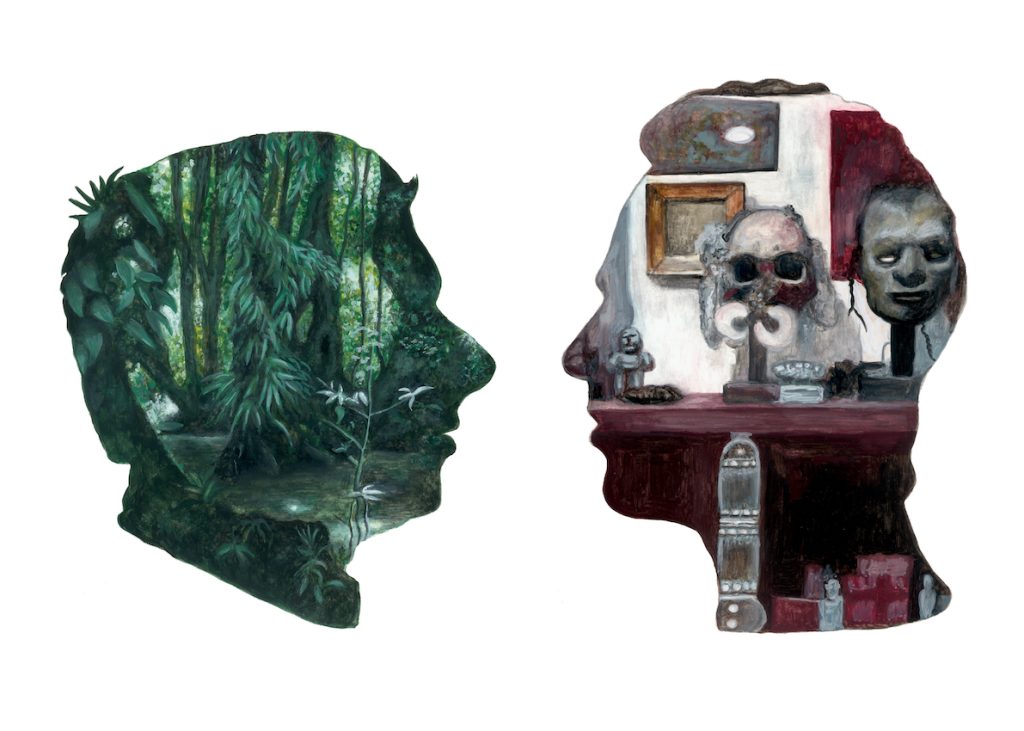
FRAGILE KOEXISTENZEN:
On September 16, 17, and 18, 2022, Museum Morsbroich in Leverkusen
will open its new (2nd) Spielzeit.
Fragile Coexistences: The second stage of the Spielzeit project shows first results, changes in works and spaces. Artistic works and spaces have been modified, grown and exchanged. First thematic questions emerge and move as subtext through the spaces – among them the question of our social and ecological coexistence, the coexistences in a fragile world as well as the aspect of institutional and private collecting – obsession, time document, capital investment, (substitute) satisfaction?
OBSESSION – COLLECTION
Collection Gerhard Theewen
What an abundance! A chamber full of art – one wonders. An overabundance of works of art, of things and words, books, animals and natural objects, from near (Rhineland) to far (Africa, Oceania or Iceland) countries. Everything seems to belong together and even to grow together here.
This modern chamber of art and curiosities gives a small insight into the collection cosmos of Gerhard Theewen. Theewen is a trained artist and founder of the Cologne-based Salon Verlag. Over the past 30 years, Theewen’s publishing activities have also made him one of the ‘archives’ of the Rhineland art scene. Countless threads come together in his Salon Verlag, from near and far. Time and again, he translates his unbroken desire for art into a remarkably independent quality in the most diverse formats. Above all, the interfaces between book and image are his terrain. Many of ‘his’ artists* have been working with Theewen for decades – a greater compliment is impossible. One of ‘his’ artists is Mark Dion. When you look at this space and then at the interior of Dion’s Witches’ Cottage out in the garden (of Museum Morsbroich), you see that two avid collectors have come together.
In this context, Gerhard Theewen (SALON Verlag Köln) shows parts of his private collection(s) in a corner room of the museum until spring 2023.
Works of contemporary art by:
Bernd Ackfeld, Martin Assig, Joseph Beuys, Michael von Biel,
Bittermann & Duka, Caroline Bittermann, Stefan Bohnenberger,
Gerd Bonfert, Natascha Borowsky, Alexander Braun, Berlinde De Bruyckere,
Peter Buggenhout, Franz Burkhardt, Oliver Czernetta,
Mark Dion,
Reinhard Doubrawa, Peter Duka, Marcel Dzama, Marcel van Eeden,
Jochen Flinzer, Günther Förg, Klaus Gaida, Pierre Granoux,
Tobias Hantmann, Antonius Höckelmann, Gustav Kluge, Mischa Kuball,
Jochen Lempert, Bärbel Messmann, Ulrich Moskopp, Marcus Neufanger,
Chris Newman, Olaf Nicolai, Jürgen Paas, Franziska Reinbothe,
Thomas Ruff, Roland Schappert, Nora Schattauer, Stefan Schmitz,
Adrian Schoormans, Norbert Schwontkowski, Christian Sery,
Thomas Struth, Gert & Uwe Tobias, Rosemarie Trockel, Günter Tuzina,
Ecki Vespa, Johannes Wohnseifer, 4000, et al.
Supplemented by a selection of minerals, fossils, curiosities, figurines and power objects from Africa.
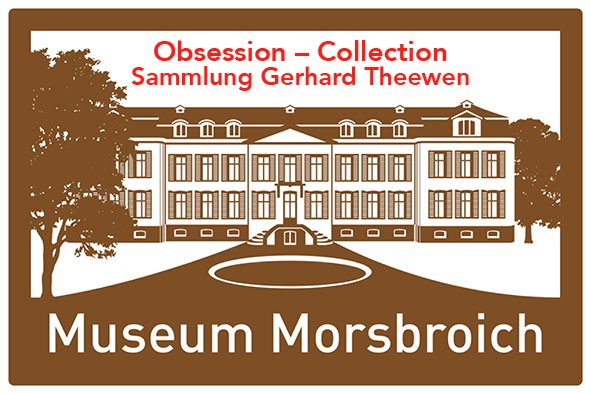
Gustav-Heinemann-Strasse 80
D 51377 LEVERKUSEN
T: +49 214 406 – 45 00
E: museum-morsbroich@kulturstadtlev.de
www.museum-morsbroich.de/spielzeit/museum/obsession-collection
www.museum-morsbroich.de/museum/skulpturenpark/mark-dion
Opening hours: Tuesday – Sunday from 11 a.m. – 5 p.m.
SALON VERLAG & EDITION
Gerhard Theewen
Am Wassermann 36
D-50829 Köln
Tel.: 0221-4995822
mail@salon-verlag.de
www.salon-verlag.de
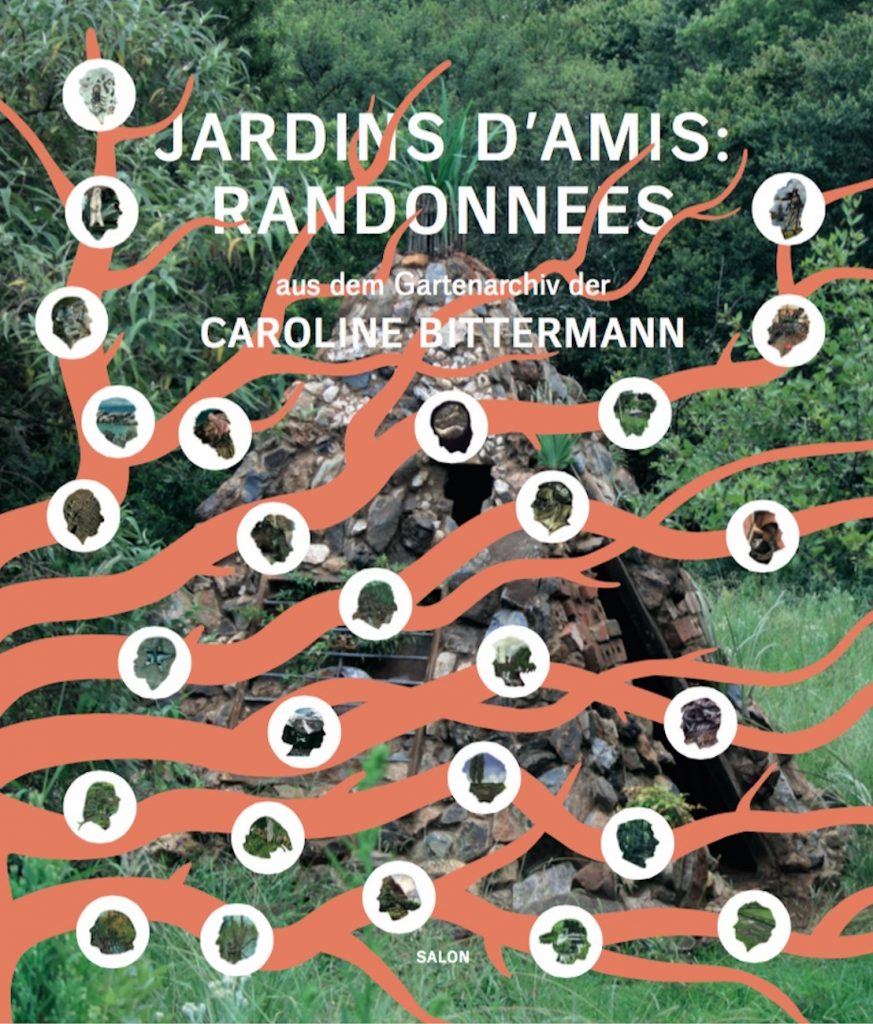
IRRHAIN
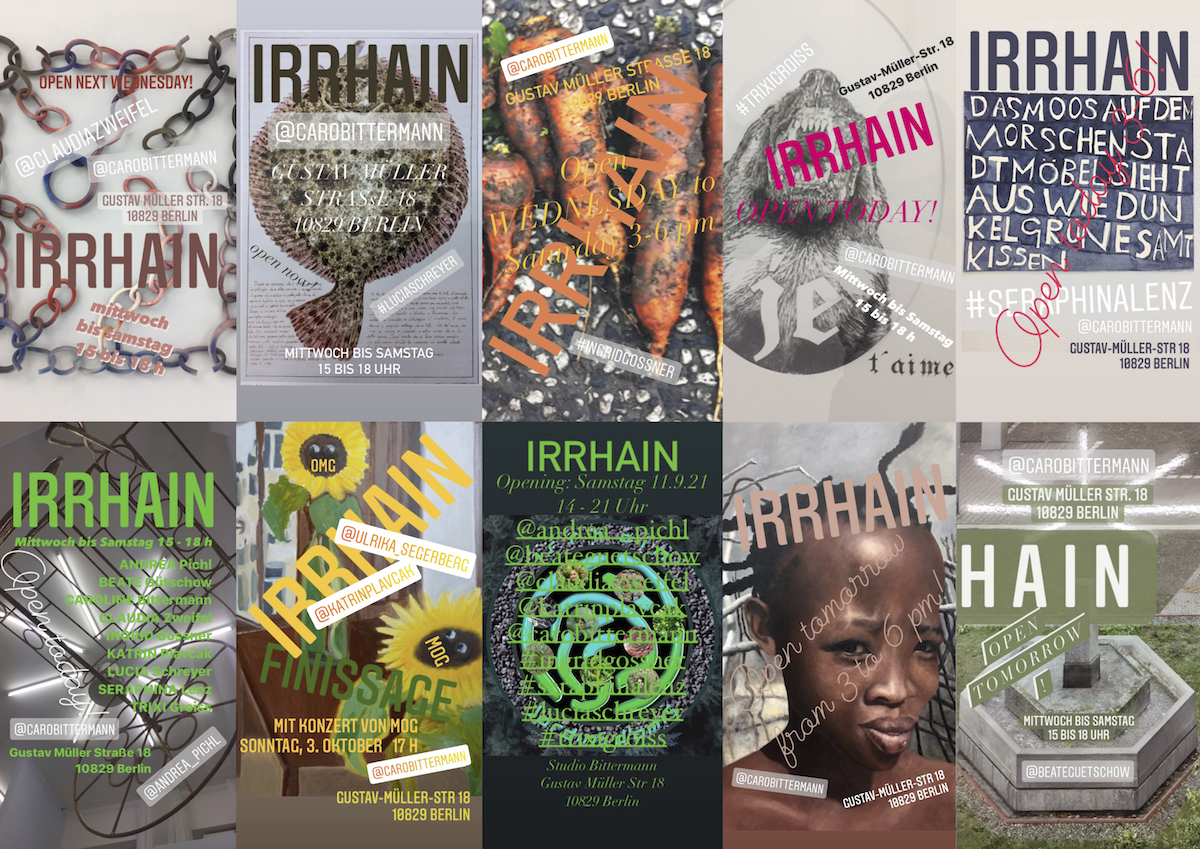
IRRHAIN
with
ANDREA Pichl | BEATE Gütschow | CAROLINE Bittermann | CLAUDIA Zweifel
INGRID Gossner | KATRIN Plavčak | LUCIA Schreyer | SERAPHINA Lenz | TRIXI Groiss
Called by Caroline Bittermann
Soft Opening: Saturday, 11. September 2021, 2 – 9 pm
Exhibition: 11. September – 3. Oktober 2021
Wednesday to Saturday 3 – 6 pm
Finissage: Sunday 3. October 2021, 5 pm
Concert by „Mothers of God“ (Katrin Plavčak & Ulrika Segerberg)
c/o Caroline Bittermann, Gustav-Müller-Str. 18, D 10829 Berlin
www.thehistoryofpaintingrevisited.weebly.com
What do we want to accomplish together on earth? Pursuing this question is elementary in a good friendship. Friendship is the only social relationship based on real equality that can be sought and created without genetic coercion. Friendship cannot be controlled by the state. It is not subject to public laws. Nevertheless, it is not only private, but because of its real democratic essence, it is a political instrument that can achieve powerful results. It is the epitome of freedom in relational events (actually it should be: Liberté, Egalité, Amitié – freedom, equality, friendship).
Friendship embodies openness, like art, but is at the same time of precarious fragility, since trust is its basis, and betrayal can quickly mean its end. Intentlessness must be equalized with intense balancing of closeness and distance. Free play and strict form are the decisive contrasts that constitute friendship. A differentiated culture of conversation, listening of the highest quality, respect and restraint are just as important as a soothing presence in all situations. Loyalty and tolerance, honesty and tact, discretion and independence, humor and taste are welcome moral companions in an attempt to define friendship – which, however, can always be seen as a contradiction in terms.
Historically, friendship has had patriarchal connotations. Female friendship has long been as little appreciated in literary/artistic terms as lesbian love. Pushed back into the private sphere, the definition of women’s friendship has been reduced to the level of a coffee party. The absence of women in public life prevents serious descriptions of their relationships with each other. Only in the Romantic period do women prove the opposite in their letters. But, for example, in the history of painting of this epoch, in which the genre of the “friendship portrait” crystallizes, it is hard to find a female painter who portrays another female painter in an amicable manner, as her male colleagues then often do in Rome.
Attributing an intellectual intrinsic value to women’s friendship and addressing it culturally is a recent phenomenon. An even more complex relationship than the general female friendship is the female artist friendship. It can be thought of as an “eutopia”, because the moral values described above are joined by an intensive artistic exchange, which is otherwise rather rare, and thus results in a complicity that expresses itself in many ways. Friendship is an Eu-Topos, because its dystopian counterpart would be enmity. The literal translation of Eu-Topos is “The Beautiful Place.” In the figurative sense, valuable things are sown there, which can germinate in secret, because they appear to be potentially future- and expandable. In addition, it is not only here that friendship with all living things can be tested in general, but it is here in particular that the friendship of women artists can flourish, because beyond the loneliness of the studio, common ideas can be spun and projects implemented that can profit from the respective, often contradictory universes.
Friendships, however, have “danced” between these universes less than usual in the last one and a half years. They have been held up by pandemic obstacles. The quality of their social flexibility has been severely compromised. The dictatorship of viral events suddenly radically limited their otherwise “antityrannical” character, and the absence of friends became an existential threat to social life.
These particular conditions have led me to reflect once again on the theme of friendship with an exhibition. This time I am pursuing the question: Which friendships have withstood the virus-induced abandonment of „dance“? Which relationships have grown precisely because of the spatial separation, not only emotionally, but also intellectually, even spiritually? How can these experiences be presented in a joint encounter in an exhibition?
I gave the exhibition the title “IRRHAIN” because it not only echoes the garden theme of the “labyrinth”, but also what makes us human in contrast to artificial intelligence: erring, searching, doubting and the resulting subtle, constantly changing adaptability to complex, also emotionally challenging situations, such as the pandemic or climate change, often give us cause for concern, but also for hope.
Friendship embodies one of these hopes. Together with eight artists/authors whose friendship means a great deal to me for very different reasons, the exhibition aims to provide a response to the experiences of the past months in Lockdown. Not only is it an inventory of the various forms of collaboration that have taken place over the past years, sometimes decades, but it is also a tribute to the resilience of our connections and the inspiration that has come from these relationships.
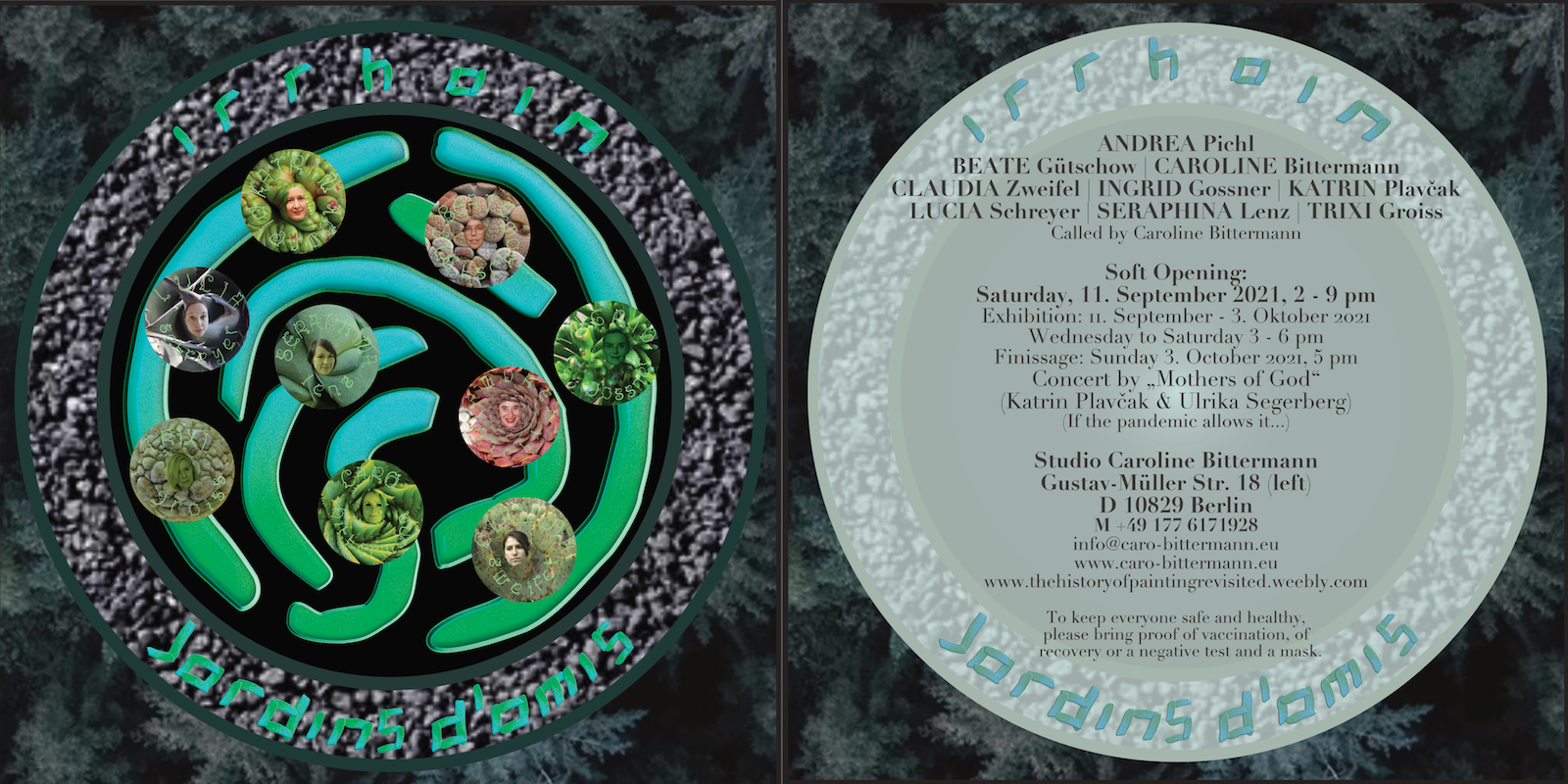
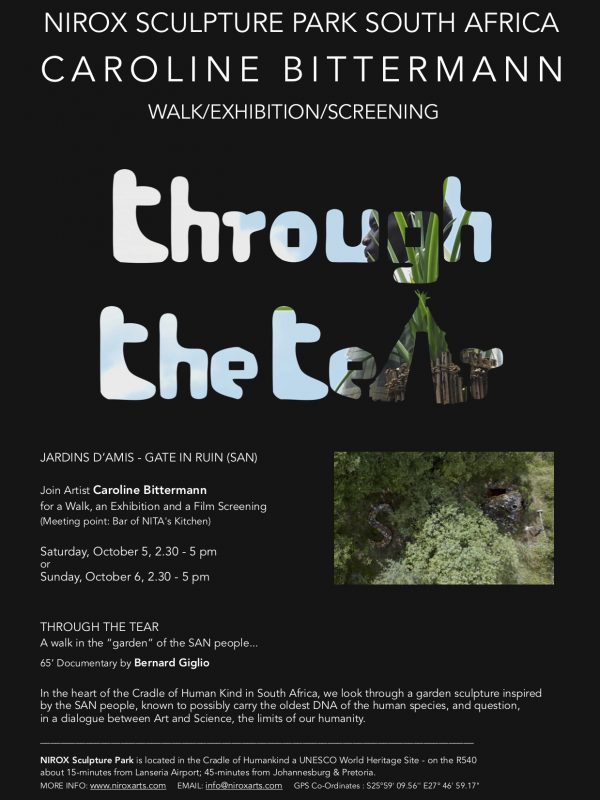
JARDINS D'AMIS - GATE IN RUIN (SAN)
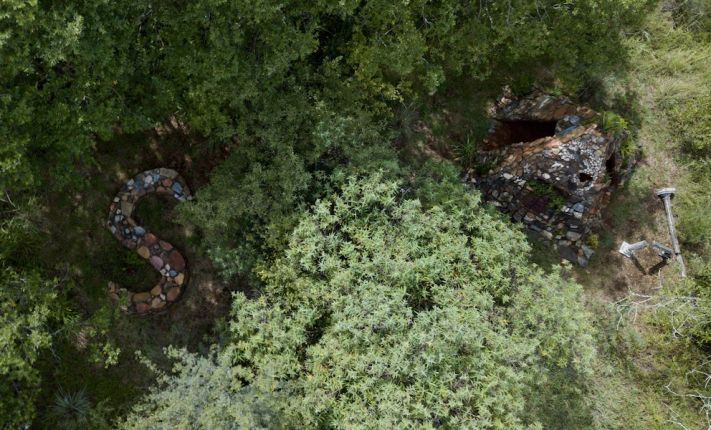
JARDINS D’AMIS – GATE IN RUIN (SAN)
Working with the idea of the historical English Landscape Garden, where ruins often had critical political impacts expressing the rebellious opinion of the garden-owners through architectonical representations of a “better past”, I have constructed an artificial ruin titled “Jardins d’amis – The Gate in Ruin (SAN)”. Oscillating between a sculpture, a garden-architecture and text written on the ground, I am taking a wider perspective, though, going back to our origin, not only to the Western World’s origin, but to the “Cradle of Humankind”, in particular to our DNA and in consequence to the SAN people. They are supposed to be the first branch of the human genealogical tree from which all other humans have spread over the globe. My research of the SAN has led to a deepened understanding of the contradiction of their place as our genetic origin and the racist treatment of the few surviving SAN groups pushed to the Kalahari-Desert.
I emphasize these contradictions by writing” the word SAN in two different ways on the ground, with architecture and light, gaining and loosing its readability as the visitor and the sunlight are moving on. As for the architecture, its three letters S A N are built out of used construction-material, natural stones from the bush-land around and specific plants chosen by gardeners of the foundation (Michael Mlaula and others) who have helped to build the art-work. Their participation is part of the concept of the creation and they are invited to take care of the work and the plants now and in the future.










FOLLIES - ROCHERS TREMBLANTS DE LA BARQUE

PISSING IN A RIVER. AGAIN!
A project by Kunstraum Kreuzberg/Bethanien. Artistic directors: Andrea Pichl and Stephanie Kloss.
17. November 2018 – 13. January 2019
Opening: Friday, 16. November, 7 pm
Patti Smith’s “Pissing in a River – Watching it Rise” (1976) stands metaphorically for resistance and rebellion. To begin with, the lyrics refer directly to intensive feelings of inevitability, uncertainty and vulnerability, which the musician transforms through a provocative and self-determined act of strength and courage. In this way, making a break with societal conventions leads to the self-empowerment of the lyrical protagonist.In the framework of the exhibition project Pissing in a River. Again!, 31 contemporary female artists from various generations show works from a range of diverse media, including videos, sculptures, paintings, photographs, and performances. The works grapple with social questions in diverse ways. Attributes such as strength, independence and decisiveness – ostensibly associated with masculinity – are thematically appropriated by the exhibition’s female artists to take on other characteristics.This approach is also taken up in the spatial concept of the exhibition, which was likewise conceptualised by the artists Stephanie Kloss and Andrea Pichl: fragments of a roof structure made of black sailing rope connect all exhibition spaces and artistic positions. In between, the proposed colour Cool Down Pink is applied as a critical commentary: the rose tint has a calming effect and de-escalates the potential for aggression according to psychological studies. Meanwhile, it also refers to traditionally feminine gender roles and norms in which resistant behaviour is not allowed any space – and has instead long been associated with hysteria. Pissing in a River. Again! celebrates the diversity of contemporary female artists who position their work intensively and offensively in an art world still dominated by masculinity – or who directly challenge this. At the same time, the project brings together a selection of female artists of various generations, mostly living in Berlin. With the support of a diversity of methods and materials and an extensive programme of side events, the exhibition teases out the rules of feminine self-determination: provocative, humorous, loud, and strong.
Artists: Caroline Achaintre, Yael Bartana, Caro Bittermann, Teresa Burga, Susanne Bürner, Keren Cytter, Natalie Czech, Tatjana Doll, Kerstin Drechsel, Valérie Favre, Berta Fischer, Laura Horelli, Nadira Husain, Anne-Mie van Kerckhoven, Stephanie Kloss, Folke Köbberling, Julia Lazarus, Hanne Lippard, Sarah Lüttchen, Inge Mahn, Andrea Pichl, Katrin Plavcak, Laure Prouvost, Sabine Reinfeld, Farzaneh Rosta, Katharina Sieverding, Céline Struger, Barbara Trautmann, Raphaela Vogel, Ina Weber, Ruth Wolf-Rehfeldt
Kunstraum Kreuzberg/Bethanien
Mariannenplatz 2
10997 Berlin
www.kunstraumkreuzberg.de
bethanien@kunstraumkreuzberg.de
Tel.: +49-30-90298-1454
Fax: +49-30-90298-1453
Opening hours: daily from 11am-8pm, entry free of charge
ON THE HORTUS CONCLUSUS AND OTHER GARDENS...
Wednesday, 11 July 2018, 6.30 pm
Integratives Bauprojekt am ehemaligen Blumengroßmarkt (IBeB)
Lindenstraße 90 / 91, Berlin-Kreuzberg
www.archplus.net
Participants: Verena von Beckerath, Caroline Bittermann, Giulia Bruno, Peder Bugge, Dania Burger, Anke Dorndorf, Jan Dunzendorfer, Beate Gütschow, Tim Heide, Christoph Heinemann, Susanne Heiß, Martin Fuller, Jinok Kim-Eicken, Armin Linke, Anh-Linh Ngo, Marion von Osten, Janine Sack, Barbara Schindler, Christoph Schmidt, Peter Spillmann, Rosario Talevi et al.
JARDINS D'AMIS : RANDONNEES
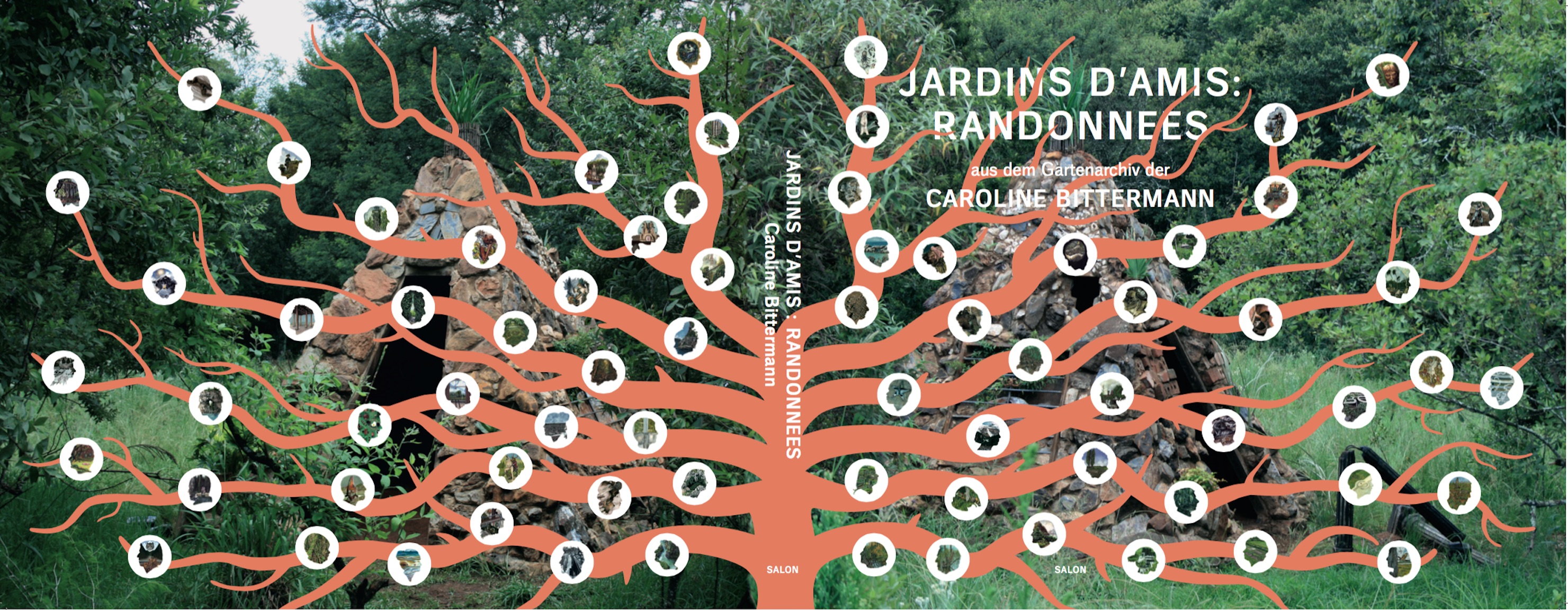
JARDINS D’AMIS : RANDONNEES
Aus dem Gartenarchiv der Caroline Bittermann
Artist-Enzyclopedia, 360 pages in colour, German/English
With texts by Christine Heidemann and Lucia Schreyer
Published by Salon Verlag [&] Edition, Cologne, 2015
Bookpresentations:
oqbo | paperfile on tour
POSITIONS Berlin Art Fair
Professional Preview: Thursday 27. September 2018 | 1 – 5 pm (with invitation only)
Opening: Thursday 27. September 2018 | 5 – 9 pm
Visitor’s info:
Friday 28. September 2018 / 1 – 8 pm
Saturday 29. September 2018 | 1 – 8 pm
Sunday 30. September 2018 | 11 am – 6pm
POSITIONS Berlin Art Fair | Booth E14
Arena Halle | Eichenstraße 4 | 12435 Berlin
Professional Preview | Thursday 14. September 2017 | 2 – 6 pm
Opening | Thursday 14. September 2017 | 2 – 10 pm
Opening hours | Fryday 15. September 2017 | 1 – 8 pm |
Saturday 16. September 2017 | 1 – 8 pm |
Sunday 17. September 2017 | 11 am – 6 pm
#TABS – Temporary Artist’s Book Shop/LAGE EGAL {OFF SITE}
Book Launch SHELF LIFE #13
Book presentation with some prints
From the special edition “Eutopic Dialogues”
Saturday, 23. April 2016, 7 – 9 pm
Linienstr. 141, 10115 Berlin
(LAGE EGAL…)
Friends with Books, Art Book Fair Berlin
Hamburger Bahnhof – Museum für Gegenwart, Berlin
Salon Verlag Cologne
11. – 13. December 2015
Opening 11. December 2015, 6 pm
oqbo | raum für bild wort ton, Berlin
Book presentation with some prints
From the special edition “Eutopic Dialogues”
With a concert by Catherine Lorent (GRAN HORNO)
Wednesday, 30. September 2015, 8 pm
(Documentation Galerie oqbo…)
Hochschule für Bildende Künste Braunschweig
Book presentation on the “Terrain vague”, invited by Ilka Becker
Saturday, 18. Juli 2015, 2 pm
MISS READ, Akademie der Künste, Berlin
Salon Verlag Cologne, hall 1
26. – 28. June 2015
Opening 26. June 2015, 5 pm
Universität der Künste Berlin
Book presentation, lecture: Women Rule the World
Thursday, 24. April 2015, 9 am
Art Cologne, Cologne-Deutz
Salon Verlag Cologne, hall 11.3, hallway B, booth 046
16. – 19. April 2015
Opening 15. April 2015, 2 pm
